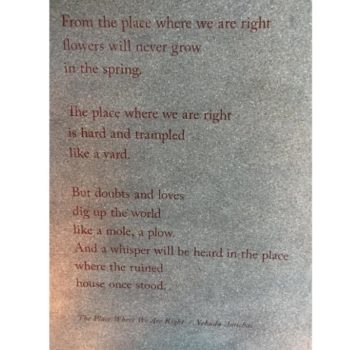Fifteen hundred years ago, in central Afghanistan, some devout individuals carved out of a sandstone cliff some remarkable sculptures known as the Buddhas of Bamiyan. For 1700 years, these statues stood proudly, over 150 feet tall. In March of 2001, the Taliban dynamited the statues. They were idolatrous, and thus were an intellectual, emotional and spiritual affront to Taliban leaders.
When conservative Judaism made the change to allow congregants to drive to shul on Shabbat, the argument against the change was that congregants would take this permission further than intended. Those opposed to this shift were concerned that anyone who started driving to shul on Shabbat would eventually be driving to the movies on Shabbat or driving to the mall on Shabbat.
We all know that satisfaction is the greatest reward, blah, blah, blah. But sometimes a tangible reward is the most helpful one. You guessed it – this too is Torah.
D'var from Friday, May 27th - Rabbi David Kosak and d'var from Saturday, May 28th - Rabbi David Kosak. Recorded and edited by Ed Kraus.
There's a recent book out by mathematician Joseph Mazur entitled Fluke. Mazur purports to explain the statistic probability of improbable events, thus showing how likely the unlikely really is. Mazur's premise came to mind after a week full of encounters with friends old and new.
When we talk about “planting the seeds of change” or “reaping what you sow,” we’re not merely speaking in metaphors. Certainly there are examples of nature and agricultural symbolism throughout our sacred texts, but this week we learn that the laws of the land (the literal land) are directly related to how we establish a just and equitable society.
Call it what you will (nap time, down time, rest time), but taking time to reset is simply part of good health. And this too is Torah.










